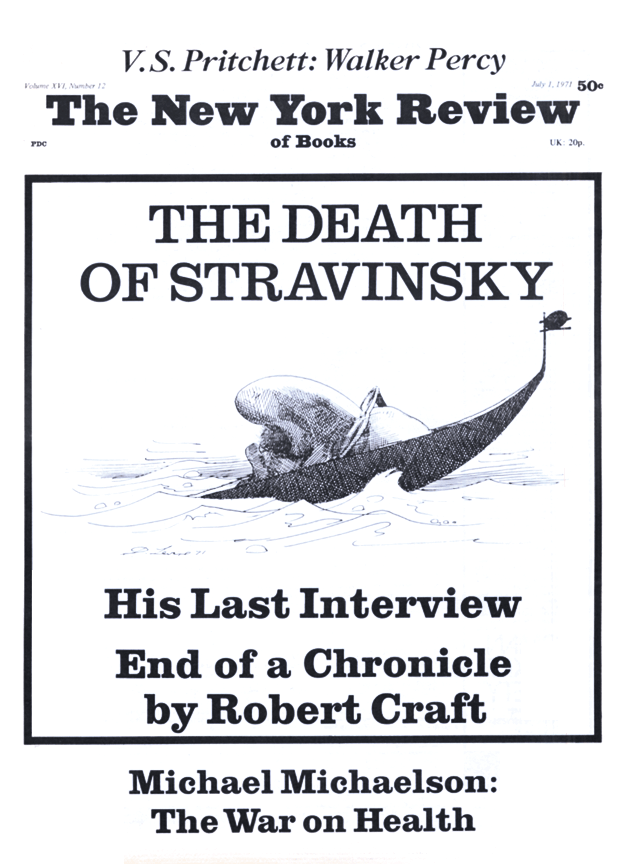In response to:
Homage to Catatonia from the February 11, 1971 issue
To the Editors:
I was somewhat disappointed with the recent review of the works of the British psychiatrist R.D. Laing (NYR, February 11), which seemed to be more of a critique of his style than of his ideas.
Laing’s work represents a synthesis of the most important new ideas in psychiatry since World War II, and deserves a more lucid presentation. He has contributed two new approaches to the field which, in my mind, reflect genius in their conception and may someday revolutionize psychiatry in their application. These are, first, that we should categorize schizophrenia not as a mysterious and irrational disease, but as a neurophysiological response, a process initiated when the person affected is confronted socially with an impossible situation, a “double-bind.” Analogous physiological responses are the shock-reaction, which occurs suddenly after a person has been seriously injured; the starvation-response, in which a complex series of metabolic changes occur, enabling one to adapt to and tolerate starvation for two months or more; and the panic reaction, which occurs after a severe fright. The schizophrenic response would be similar if some outer stimulus causes the patient to lose his grasp of ordinary consciousness.
Laing contends, and I agree, that patients might in many cases return normally from their psychotic or schizophrenic episodes if they were “guided” through the experience rather than “treated.” Our failure to deal with schizophrenia intelligently results from our ignorance and alienation from the spiritual or “inner” realm of consciousness in general in this century. The point I would like to bring out from the above physiological analogies is that in Laing’s thought we are witnessing a convergence of natural science and psychiatry, where disorders and their symptoms are understood as an attempt by the organism to adapt to or compensate for some perturbing influence. If the perturbing influence is identified then we can learn and come to understand the body’s reaction to it.
Thus there is really no antagonism between Laing’s ideas and the “positivist myths” as Tyson suggests, because it is only of semantic concern at this time, considering the state of our knowledge, to speculate whether the biochemical lesion “causes” the mental disorder, or whether the disorder causes the lesion. However, it is a well-known statistical fact that people can be genetically predisposed to schizophrenia, and what Laing is suggesting is that unfavorable social circumstance may be the controlling factor in converting that predisposition into an actual psychotic episode.
The second unique approach Laing has taken is an attempt to define these social circumstances which drive people crazy. This represents a quantum leap forward from classical Freudian analysis in which only the individual disordered psyche is considered a relevant object of study. Laing has begun to rigorously outline a theory of interpersonal or group relations in order to place one’s social experience and behavior into an intelligible framework. If the language or style Laing uses seems bizarre (as in Knots) it is of course because no one has ever before devised a jargon for expressing these concepts.
Tyson’s comments about Laing’s failure to recommend solutions to the problems he raised of treating mental patients, I find a bit silly—sort of like criticizing Darwin for neglecting to recommend how the human race should evolve. Finally, I was puzzled by Mr. Tyson’s preoccupation with the fact that Laing is “popular” or a “cult-leader.” Could it be that there is still a tendency among some scholars not to really take an idea seriously unless it is expressed “properly” and stored away in the sacred annals of academic obscurity?
Irving L. Givot
Department of Biochemistry
Brandeis University
Waltham, Massachusetts
This Issue
July 1, 1971


